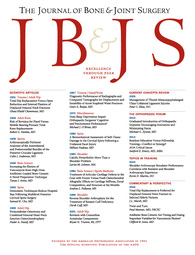
Arthroplasty
High flexion vs. conventional prostheses in TKA: similar migration and clinical outcomes
This report has been verified
by one or more authors of the
original publication.
J Bone Joint Surg Am. 2013 Oct 2;95(19):e1411-11
74 patients, scheduled to undergo primary total knee arthroplasty, were randomly assigned into 1 of 4 prosthetic groups: high-flexion mobile bearing, high-flexion fixed bearing, conventional fixed bearing, and conventional mobile bearing. The purpose was to compare the migration and clinical outcomes of high-flexion total knee arthroplasty with fixed or mobile bearings versus the conventional counterparts. Results of the study demonstrated that high-flexion knee prostheses with a mobile or fixed bearing led to comparable tibial and femoral component migration (2 to 5 years postoperatively) when compared to their conventional counterparts.
Unlock the full article
Get unlimited access to OrthoEvidence with a free trial
Start TrialCritical appraisals of the latest, high-impact randomized controlled trials and systematic reviews in orthopaedics
Access to OrthoEvidence podcast content, including collaborations with the Journal of Bone and Joint Surgery, interviews with internationally recognized surgeons, and roundtable discussions on orthopaedic news and topics
Subscription to The Pulse, a twice-weekly evidence-based newsletter designed to help you make better clinical decisions
Exclusive access to original content articles, including in-house systematic reviews, and articles on health research methods and hot orthopaedic topics
Or continue reading this full article
Register Now

Subscribe to "The Pulse"
Evidence-Based Orthopaedics direct to your inbox.





































